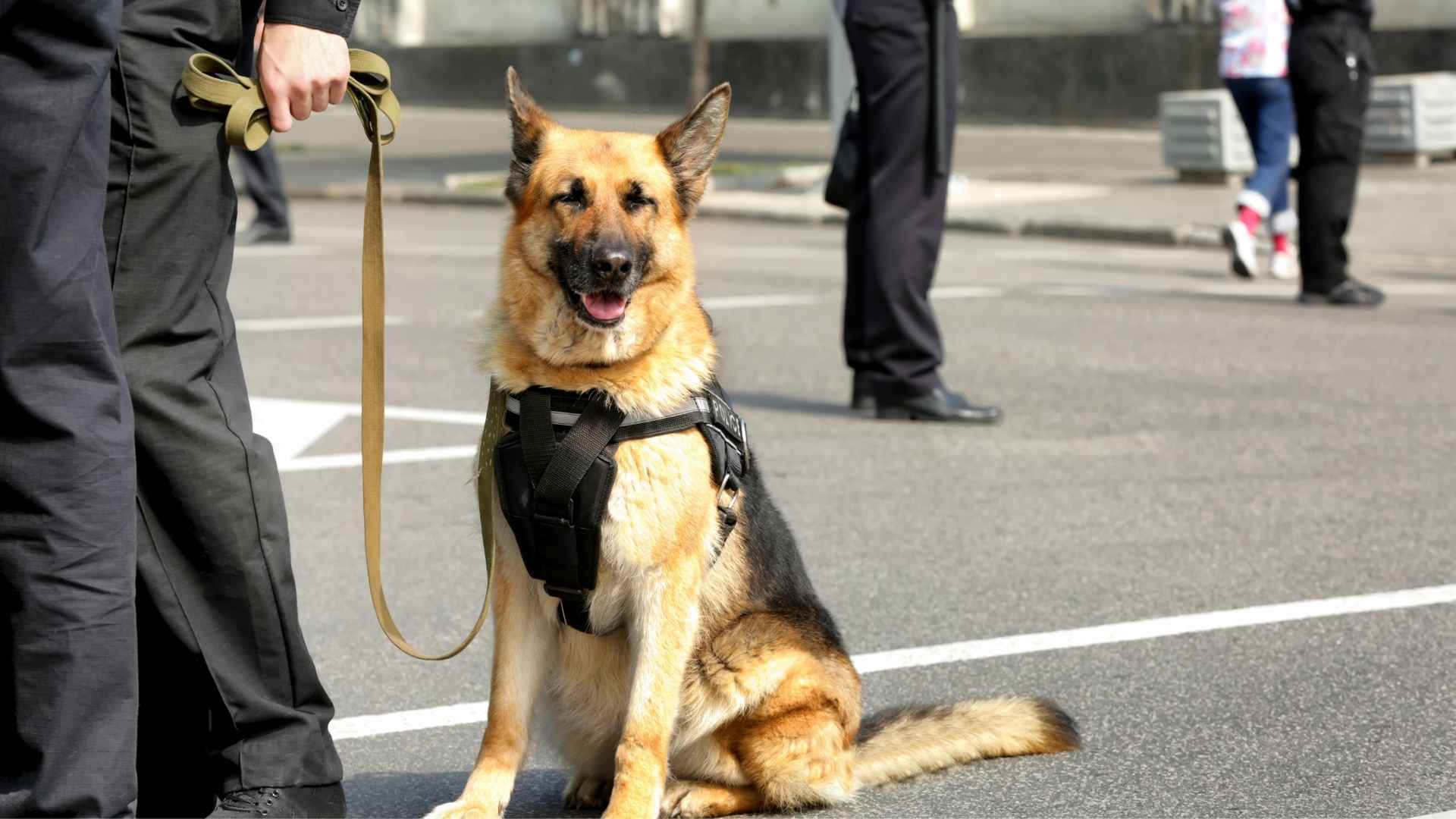In law enforcement, some dogs stand out not just for their intelligence and obedience, but for their sheer physical strength and agility. These muscular dogs are more than companions—they are indispensable partners in keeping communities safe.
According to a study, in the United States alone, there are approximately 50,000 active police K9s, each playing a crucial role in tasks ranging from tracking suspects to locating missing people.
These dogs undergo extensive training programs to hone their physical abilities and protective instincts. To prepare them for demanding police work, including patrol duties, contraband detection, and search and rescue missions.
Their muscular build, combined with a keen sense and obedient nature, makes them reliable partners in assisting law enforcement officers and ensuring public safety.
Most Muscular Dog Breeds Fit For Police Work
Here are the 7 police dogs:
1. Doberman Pinscher
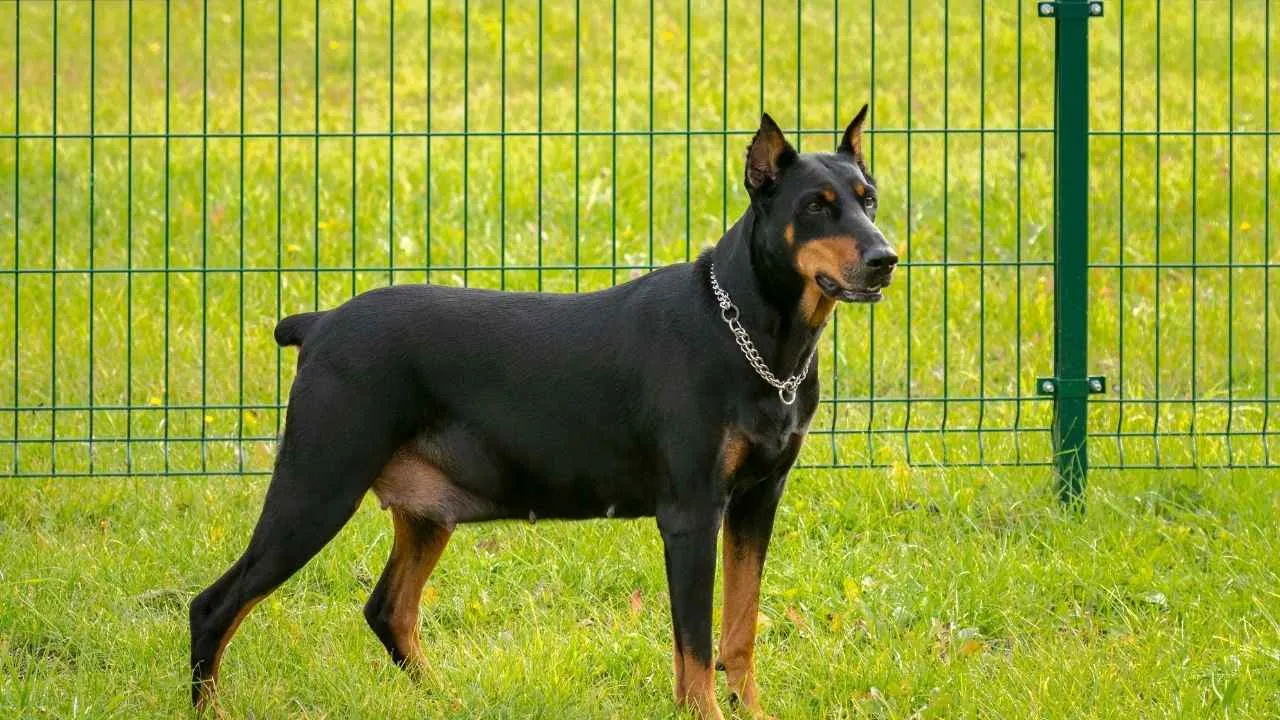
The Doberman Pinscher is a powerhouse among working dogs. With a muscular frame and athletic build, it’s no wonder this dog excels in police roles.
Known for its courage and disciplined nature, the Doberman is trained to assist law enforcement in apprehending criminals and protecting officers, making it a reliable type of police dog for various missions.
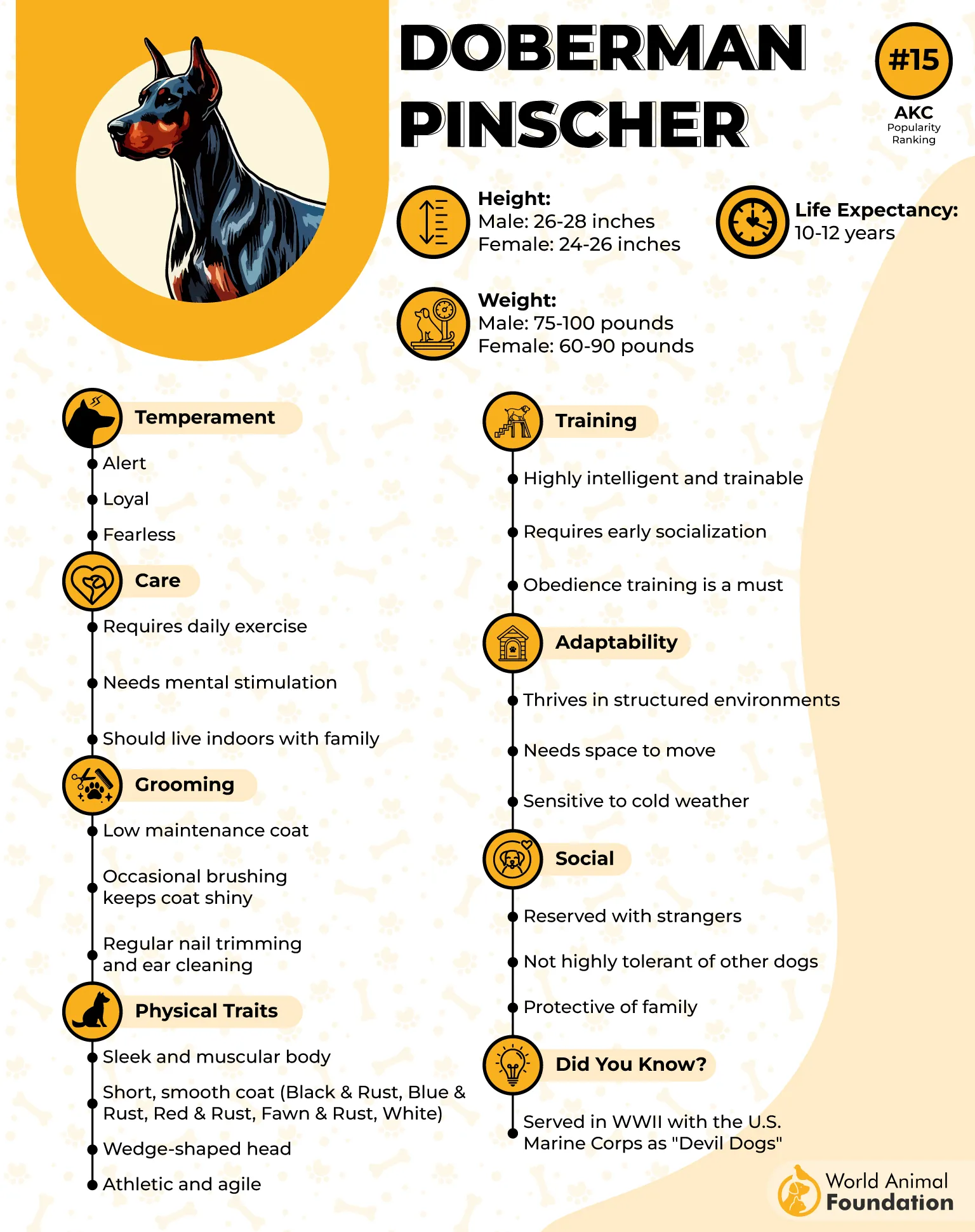
Key Traits and Characteristics
Origin and History: According to Britannica, they were originally bred in Apolda, Germany, by Karl Dobermann in the late 1800s. Developed by crossing multiple breeds to create a loyal, intelligent, and protective dog.
Physical Abilities: Sleek, agile, and strong with a muscular build. Known for speed, endurance, and jumping ability.
Temperament: Courageous and alert, yet highly obedient. Sensitive and attentive to handlers, while being protective toward family and communities.
Training Capability: Excels in extensive training programs for police work, search and rescue, tracking suspects, and guarding. Highly intelligent dogs respond well to structured exercises.
Health Considerations: Prone to dilated cardiomyopathy, Wobbler syndrome, von Willebrand disease, and hip dysplasia. Early cardiac evaluation and proper diet for large-breed puppies are recommended.
Fun Fact: Dobermans served in military work during World War II, aiding U.S. Marines in key operations. One Doberman, Kurt, was the first canine casualty in the Battle of Guam and is commemorated at the National War Dog Cemetery.
2. German Shepherd
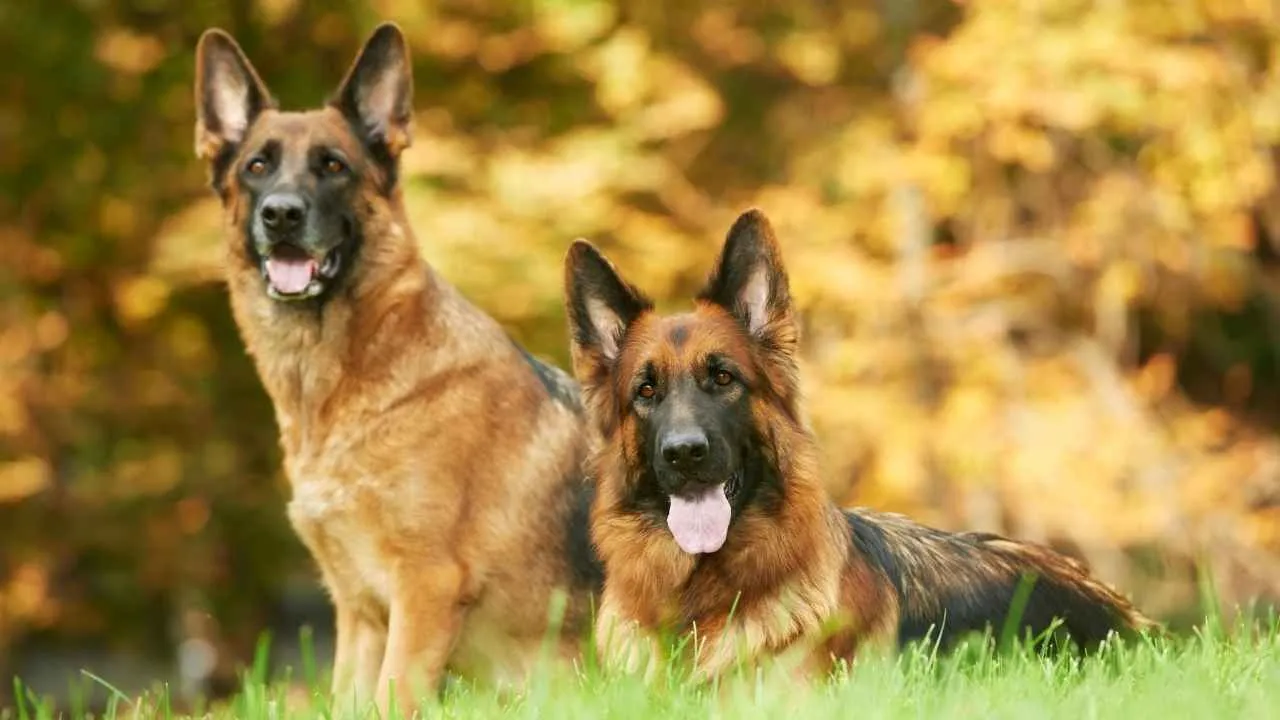
Often spotted at airports, train stations, or crime scenes, the German Shepherd is the embodiment of a perfect police dog.
Known for its intelligence and disciplined nature, this dog thrives in high-stakes environments where sharp senses and quick thinking are essential. Its athletic build and high energy make it a dependable partner for law enforcement officers tackling a wide range of police roles.

Key Traits and Characteristics
Physical Abilities: Muscular and agile frame allows it to navigate tight spaces and pursue suspects efficiently.
Intelligence and Trainability: According to PetMD, they are extremely intelligent dogs that respond well to specialized training and obedience programs.
Protective Nature: Loyal and confident, with strong protective instincts toward handlers and communities.
Versatility: Excels in search and rescue missions, detection of illegal substances, and patrolling tasks.
Energy Levels: High-energy dog that requires structured daily exercise and mental stimulation.
Social Skills: Benefits from early socialization to develop into a well-mannered, cooperative working dog.
Unique Trait: Known for bravery and calm poise even in stressful environments.
Care Needs: Double coat requires regular grooming, especially during seasonal shedding periods.
3. American Pit Bull Terrier
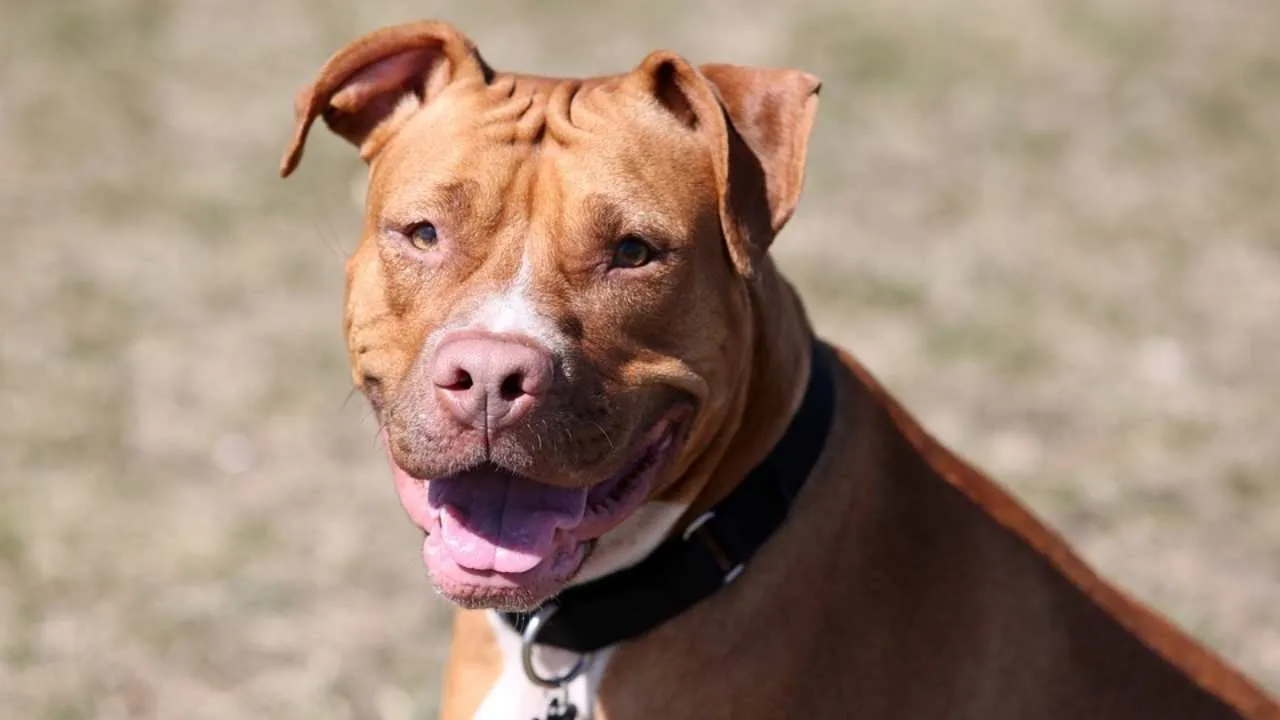
American Pit Bull Terriers are becoming an increasingly popular choice for law enforcement. While not all dogs are suitable for police work, many police departments are discovering that these terriers combine strength, loyalty, and trainability with a cost-effective alternative to traditional police dogs.
Their muscular frame and courage allow them to patrol, detect illegal items, and support officers in a variety of police dog breeds’ roles.
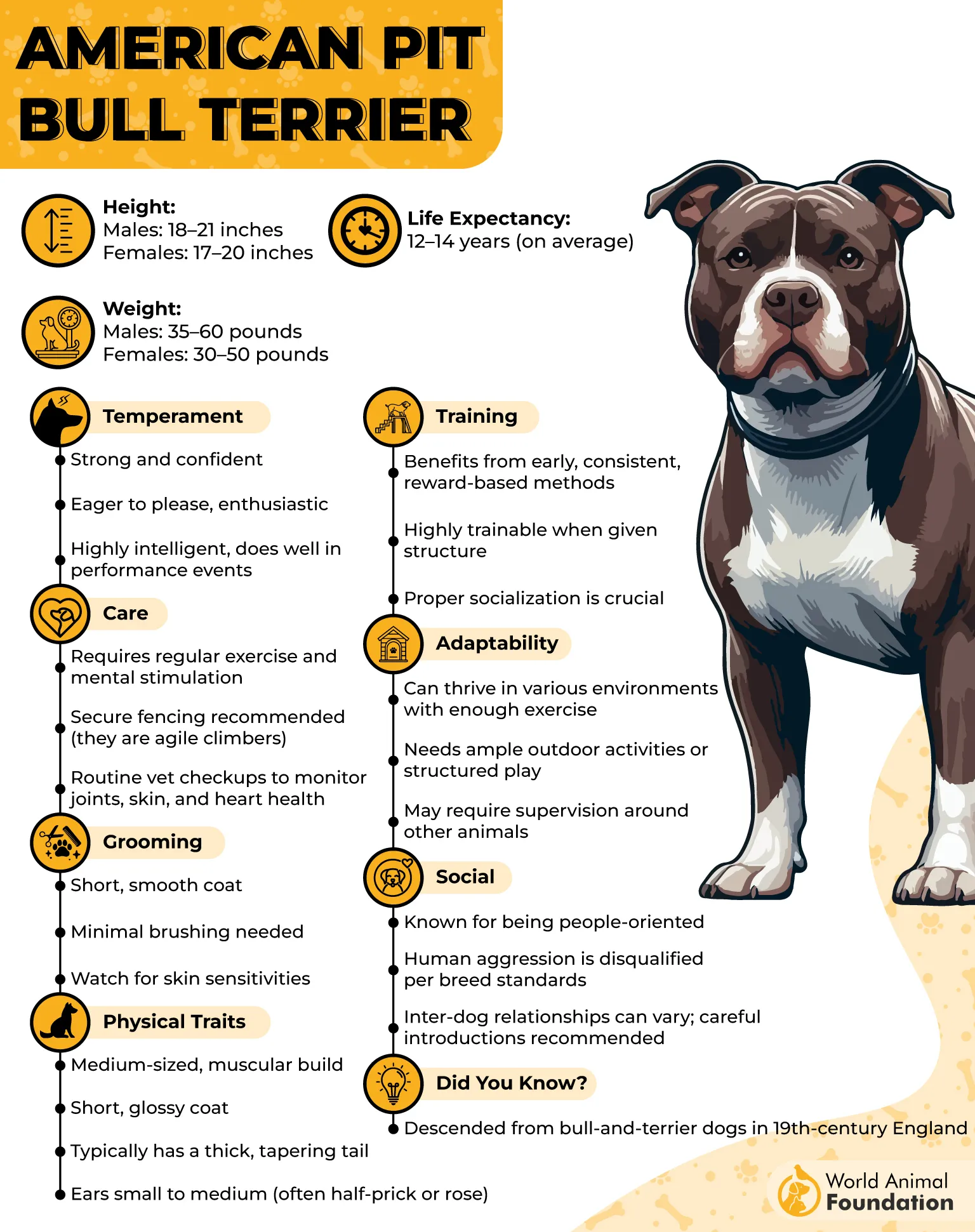
Key Traits and Characteristics
Origin and Background: Medium-sized terrier from the United States; historically, multipurpose working dogs and family companions.
Physical Build: Well-muscled body with an athletic and agile frame; short, smooth coat in multiple colors.
Temperament: Loyal, affectionate, and courageous; strong bonds with handlers and family members.
Trainability: Highly trainable with positive reinforcement methods; excels in obedience and specialized tasks.
Exercise Needs: Medium energy level; requires daily physical activity and mental stimulation to stay well-behaved.
Social Skills: Can be protective toward other animals; early socialization is essential for well-rounded behavior.
Health Considerations: Prone to hip dysplasia, atopic dermatitis, and hypothyroidism; regular vet checks recommended.
Unique Trait: Many come from rescues, offering police departments an affordable yet effective option for service work.
4. Bloodhound
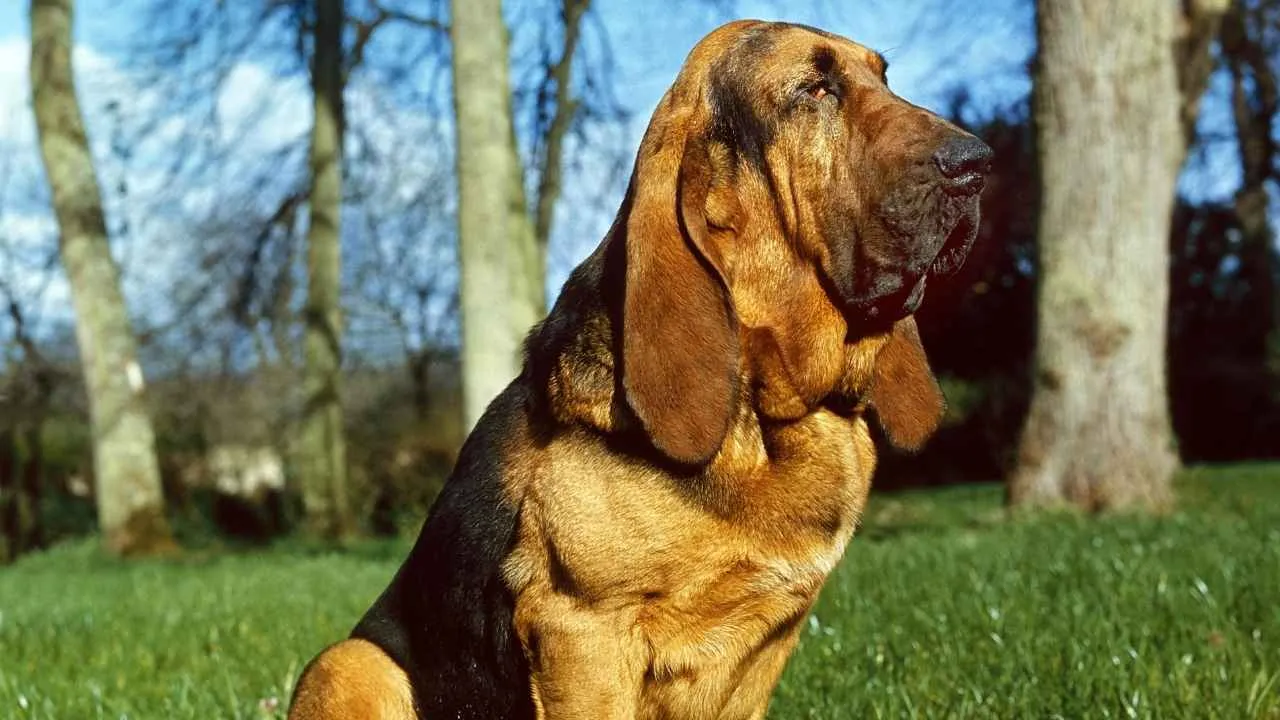
Few dogs can match the Bloodhound when it comes to tracking. Their sense of smell is so precise that trails they follow have been accepted as crime scene evidence in U.S. courts. This makes them invaluable in finding missing people, locating suspects, and supporting search missions.
Key Traits and Characteristics
Scent Abilities: Exceptional nose capable of following scents for miles; often used to locate missing people and match crime scene evidence.
Temperament: According to Hills Pet, they are gentle, patient, and noble; calm around children and friendly with other animals.
Energy Needs: Moderate daily exercise; energetic puppies require more activity and supervision.
Behavioral Traits: Determined and independent; single-minded when following a scent.
Training: Requires patience and consistency; benefits from structured routines for manners and obedience.
Unique Trait: Long jowls lead to prodigious drooling, sometimes up to 20 feet with a quick shake of the head.
History: Perfected by St. Hubert of Belgium in the 7th century; historically used to track deer and humans, now key in law enforcement and rescue operations.
5. Boxer
Boxers are a striking blend of strength, agility, and loyalty. Originally developed from the German Bullenbeisser and English Bulldog, they were once used for hunting large game and later served as messenger dogs during wartime.
Today, they have earned a reputation as one of the popular police dog breeds in Europe and the U.S., excelling in protective and law enforcement roles.
Key Traits and Characteristics
Physical Build: Medium-sized, muscular, and deep-chested; short muzzle with a slightly upturned chin.
Temperament: Fearless, confident, and loyal; attentive and protective toward handlers.
Energy and Exercise: High-energy dog requiring daily walks or active play; thrives with mental and physical stimulation.
Trainability: Obedient nature allows them to excel as specially trained dogs in police work.
Behavioral Traits: Alert and chatty; may require training to live harmoniously with children or other pets.
Unique Trait: Remains playful and puppy-like throughout life, making them engaging and spirited companions.
Care Needs: Weekly grooming; non-hypoallergenic; minimal drooling compared to other breeds.
6. Dutch Shepherd
Dutch Shepherds are versatile, intelligent, and loyal dogs that have earned a reputation as exceptional protection dogs.
Originally bred in rural areas of the Netherlands to herd livestock, guard property, and pull carts, they quickly became valued for their work ethic and adaptability. Today, they are recognized as good police dogs and excel in search-and-rescue and tracking tasks.
Key Traits and Characteristics
Temperament: Obedient, loyal, and highly responsive to commands; thrives when given a job to do.
Energy and Exercise: High-energy breed requiring 90–120 minutes of physical activity and mental stimulation daily.
Intelligence and Trainability: Highly trainable; excels in obedience, agility, and specialized tasks.
Grooming Needs: Moderate care due to short- to medium-length weather-resistant coat; distinctive brindle pattern.
Social Skills: Affectionate with family; cautious with strangers; early socialization is key.
Unique Trait: Remarkable tracking abilities and a keen sense of smell make them reliable in locating missing people.
History: Originated in the 18th century for herding and protection; valued across many breeds for versatility in work.
7. Belgian Malinois
Belgian Malinois are among the most popular breeds in law enforcement, known for their agility, intelligence, and unwavering work ethic.
Bred originally in Belgium as herding dogs, they developed a strong sense of duty and stamina, which translates perfectly to modern police roles. Their versatility allows them to excel in tracking suspects, sniffing explosives or illegal substances, and participating in search-and-rescue operations.
Key Traits and Characteristics
Temperament: Energetic, confident, and highly intelligent; thrives when given a task to complete.
Trainability: Extremely responsive to commands; fast learners suitable for specialized police work.
Exercise Needs: Requires extensive physical and mental stimulation, including runs, hikes, and agility exercises.
Protective Instincts: Loyal and alert, making them reliable in guarding and protection duties.
Health Considerations: Generally healthy; watch for hip/elbow dysplasia, epilepsy, and bloat.
Grooming Needs: Short, waterproof coat; minimal grooming required, with occasional brushing during shedding seasons.
Unique Trait: Strong bond with handlers; thrives on human companionship and structured work.
Conclusion
Muscular dog breeds bring more than just strength to the table—they offer agility, intelligence, and dedication that make them indispensable in law enforcement. With proper training, these dogs can perform a wide range of duties, from tracking missing persons to detecting contraband as a specialized detection dog.
Whether patrolling neighborhoods, securing an airport or train station, or assisting police officers on high-stakes missions. These dogs combine physical prowess with keen instincts honed from their hunting dog ancestry. Their loyalty, stamina, and focus ensure they remain reliable partners in keeping communities safe, proving that well-trained, muscular dogs are truly invaluable in modern police work.


